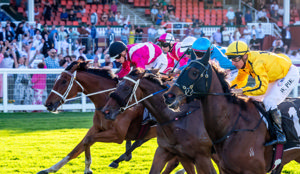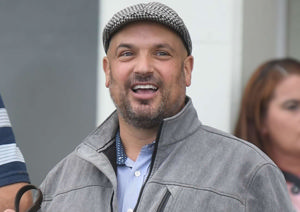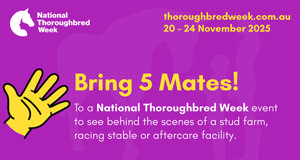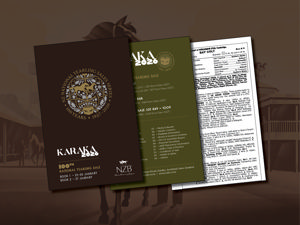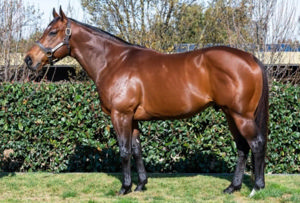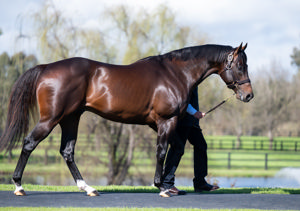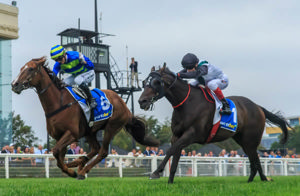Thoroughbred breeding and racing are high-risk pursuits, which are also capital and time intensive. If there are any taxation concessions out there for breeding property owners, they should be welcomed with open arms.
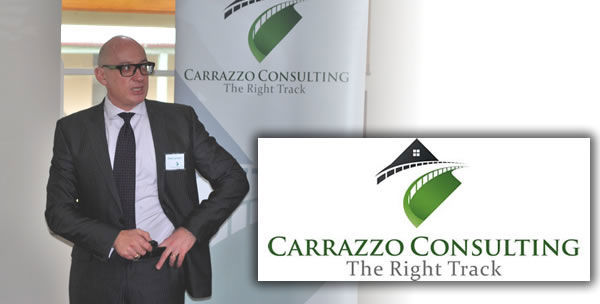
One such concession that is available, across all Australian states, is a full land tax exemption for properties that are used in a business of primary production.
Unfortunately, claiming this full land tax exemption for primary producer horse breeders can be problematic as the property owner must prove that “…the dominant use of the Land, in each of the relevant land tax years, was for “the maintenance of animals ... for the purpose of selling them or their natural increase or bodily produce”.
Even the might of Godolphin have had problems with claiming land tax exemption, with Revenue NSW initially disagreeing with its exemption argument and assessing it for land tax the in respect of two high profile NSW Godolphin properties, “Kelvinside” and “Woodlands”.
The great news for Godolphin (and potentially many in the industry who use their properties in a similar manner to Godolphin) is that on review to the NSW Supreme Court, the Court overturned the RNSW assessment on 13 April 2022 and granted the properties full land tax exemption for the relevant years. As of today, this decision has not been appealed by Revenue NSW.
Godolphin has successfully argued that two of its properties in the Hunter Valley were exempt from land tax under as the dominant use of the properties was for the maintenance of animals for the purpose of selling their bodily produce or natural increase, notwithstanding the racing related activities that occurred on the properties.
Revenue NSW had assessed Godolphin for land tax for the 2014 to 2019 tax years in respect of its two properties (Kelvinside and Woodlands) in the Hunter Valley, contending that although the dominant use of the properties was for the maintenance of animals, that use was not for the required statutory purpose of selling those animals, their natural increase or bodily produce.
The NSW Supreme Court agreed with Godolphin that it conducted an integrated stud operation (involving both breeding and raising thoroughbred horses) such that the dominant use of both properties was for the maintenance of animals for the purpose of selling their bodily produce or natural increase.
In the Court's view, the objectives of winning races and pursuit of stallion excellence were part of the overall objectives of increasing the value of Godolphin's stud operations (being nomination fees in particular and sale of the majority of Godolphin's progeny) and that the sales were sufficiently proximate - if that was a required element - to the maintenance of the animals on the properties.
I will now share with you the relevant details of this case, an extremely relevant and instructive case for the breeding industry, especially those who use their property for a multi purposes, e.g., racing, breeding, agistment, cattle grazing, crops etc. If you thought you weren’t entitled to full land tax exemption, the outcome in this case could make you think again.
1.0 Facts
Briefly, the activities carried on by Godolphin on its four breeding and/or racing properties were described by Godolphin as follows.
Woodlands
On Woodlands, Godolphin maintains thoroughbred broodmares and their offspring. Most of the offspring (around 70%) will be sold by Godolphin, usually after they have commenced their racing career, with most being sold relatively early in their career. Most of the thoroughbred horses that are not sold are used as part of Godolphin’s breeding programme (as stallions or as broodmares). Godolphin also uses substantial parts of Woodlands for the purpose of maintaining cattle for sale and uses parts of Woodlands to grow lucerne, these other uses being clearly “primary production” activities.
On Woodlands, Godolphin also maintains a small number of other horses for purposes ancillary to breeding or “education”, referred to as “nanny mares” and “hacks” (used to keep young horses calm) and “teasers” (used to prepare mares for insemination or “cover” by a stallion).
Kelvinside
On Kelvinside, Godolphin maintains what it describes as a thoroughbred stud operation, in which obviously its stallions cover mares for substantial fees. In relation to meeting the “dominant use” argument, Revenue NSW raised the argument, that ultimately failed (refer below), that only about 10% of the relevant lands parcels (PID) on Kelvinside is used for the stallion covering activities, although Godolphin’s evidence is that the stallions also exercise on other parts of Kelvinside.
To illustrate the amount of “hair splitting” that took place with this case, Revenue NSW originally asserted that the stallion activities of Godolphin did not amount to the ‘sale of bodily produce’, an argument they later set aside when Godolphin quite rightly raised the counter argument that a “thoroughbred” is not recognised in Australia and globally unless it is produced by natural cover, i.e., stallion semen cannot be “sold” separately.
Godolphin also uses substantial parts of Kelvinside for the purpose of maintaining cattle for sale, uses some parts to “spell” horses from other parts of its operations and uses particular parts of Kelvinside for the raising and education of yearlings (including the process of “breaking in” of the horses). Godolphin says that education of yearlings is carried out irrespective of whether the horses are destined for racing, sold or used for other purposes.
Crown Lodge
On Crown Lodge, which is located next to the Warwick Farm Racecourse, Godolphin trains racehorses. Godolphin accepted that the primary production exemption does not apply in relation to this “racing only” property.
Osborne Park
On Osborne Park, Godolphin operates its primary training facility for horses that have commenced their racing careers. Godolphin also uses Osborne Park for spelling horses. Again, Godolphin did not dispute that no exemption applies, and land tax is payable in respect of this property.
2.0 Godolphin exemption arguments
Dominant use of the Land
Re Godolphin’s submissions as to the dominant use of the Land, Godolphin says that the market for selling thoroughbred horses, their progeny or their semen is heavily impacted by the racing career of those horses and of other horses related to them. It is justifiably argued that the increase in the value of a thoroughbred horse with a successful racing career can be very significant – supported by a report tabled by a leading Economic consultant, Mr James Mellsop.
Within that report it was identified that each of the following influences the fees that can be derived by the owner of the stallion from stallion covering:
- the pedigree of a stallion;
- the racing history of a stallion; and
- the performance of a stallion’s progeny as a racehorse.
Further, Mr Mellsop says that the racing history of a thoroughbred horse influences the sale price of that horse in the secondary market (compared to the sale price that would be achieved if the horse were sold as a weanling or a yearling) and that the racing history of a mare influences the sales price of the mare’s progeny in a primary or secondary market.
Godolphin’s evidence is that it breeds horses with a purpose of being able to sell them or their progeny as thoroughbred racehorses or their bodily produce (the semen) in circumstances in which the resulting progeny will be thoroughbred racehorses and that this means that, until sale, Godolphin must raise and educate the horses in a manner consistent with them becoming racehorses. It was noted that this education is a fundamental training process for all Godolphin’s horses whether those are to be sold, raced or used in breeding operations, because it helps horses become accustomed to dealing with humans.
Vin Cox, a widely respected and experienced industry figure and Godolphin managing director, provided compelling evidence in this case and noted that Godolphin operates a “breed to race, race to breed model”. This integrated model reflects the fact that the racing career of a horse and its relatives has a demonstrable impact on the value of the horse for sale, or the value of the horse’s progeny Thus, Godolphin’s position is that one of the purposes of the racing activities is to improve the value of the horse and its relatives or progeny.
3.0 Judgment
The judge confirmed that the question is whether there are two separate activities (such that it is necessary to determine which is the dominant use on each parcel of land) or an integrated or composite activity (involving both breeding and raising) such that the dominant use of all parcels (whether for breeding, training or spelling) is for the purpose of the ultimate sale of the stallion’s semen and the broodmares progeny.
Revenue NSW emphasised that the horses are being bred and educated in order to race (and said that the fact that there is an incidental sale at some stage does not affect this).
It was ultimately accepted that much of the use of the Land was devoted to breeding, training and preparation of the horses for racing (and that an obvious objective is to maximise prize winnings or success on the track). However, viewed overall, the judge concluded that this is an integrated operation in which the preparation of horses for racing is with the overall or dominant purpose or objective of increasing or maximising the revenue from the nomination fees (i.e., the sale of bodily produce) and from the sale of the progeny produced by the broodmares.
Further to the above, Godolphin argued that it is the “use” that must be dominant (not the “purpose”). Accordingly, Godolphin stated that where a particular use (i.e., the physical use of the land) has overlapping purposes (especially if these purposes reinforce each other), a taxpayer should not be required to establish that the “purpose of sale” is the dominant purpose. (in the sense of prevailing over other overlapping or complementary purposes); rather the question should be whether that use can be characterised as being “the maintenance of animals…for the purpose of selling them or their natural increase of bodily produce.”
As to the assertion of Revenue NSW that the Kelvinside stallion covering activities (circa 10%) take place on a relatively small part of this land parcel, the judge noted that viewing the activities on that basis alone, especially the level of development or infrastructure on the land, the financial benefit derived, and the centrality of the activity to the whole of Godolphin’s operations, the stallion covering activities are dominant. In the sense of being the chief, main or prevailing activity at Kelvinside, it was noted that the fact that Godolphin puts the balance of the land to other productive use (i.e., cattle) is entirely understandable and is consistent with the stallion activities being dominant.
The judge did not accept that the integrated operation is for the dominant purpose of generating prizemoney (i.e., of racing). This did not make sense to him from an economic point of view. He concluded that the documented purpose of the stud operations is just that – to run a thoroughbred stud (with revenue generated from the stallions’ covering services and, to a lesser degree, from the sale of progeny and any racing success).
Please do not hesitate to contact the writer if you wish for me to clarify or expand on any of the matters raised in this article.
PAUL CARRAZZO CA
CARRAZZO CONSULTING PTY LTD
801 Glenferrie Road, Hawthorn, VIC, 3122
TEL: (03) 9982 1000
FAX: (03) 9329 8355
MOB: 0417 549 347
E-mail: paul.carrazzo@carrazzo.com.au
Web: www.carrazzo.com.au


